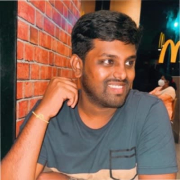

Teradata and SnapLogic compete in the data processing and integration solutions category. Teradata seems to have the upper hand in handling heavy data loads efficiently, while SnapLogic excels in low-code development environments and integration capabilities.
Features: Teradata is noted for its parallel processing, scalability, security, and fast query execution. It features a smart optimizer, workload management, and the ability to handle large data volumes. SnapLogic is recognized for its user-friendly low-code environment, extensive integration capabilities, and fast deployment, offering versatile solutions with minimal coding effort.
Room for Improvement: Teradata requires enhancements in pricing, complexity reduction, and improved cloud integration with better query performance and a user-friendly interface. SnapLogic could refine transparency in data flow, expand integration capabilities with more connectors, and reduce downtime during updates. There's a demand for better support and documentation.
Ease of Deployment and Customer Service: Teradata offers on-premises, hybrid, and cloud deployment but faces complexity in scaling and the need for smoother integration with quicker responses. Its customer service is responsive. SnapLogic offers easy hybrid and cloud deployments with a focus on usability but could improve user guidance and support.
Pricing and ROI: Teradata is known for premium pricing, suitable for large enterprises due to high-performance capabilities, promising substantial ROI through enhanced analytics. SnapLogic provides a flexible pricing model, beneficial for varied scales, with its higher costs justified by feature comprehensiveness, yielding good ROI for complex projects.
SnapLogic is really helpful and processes in very little time, so it doesn't take much time compared to any legacy tool.
We have realized a return on investment, with a reduction of staff from 27 to eight, and our current return on investment is approximately 14%.
Some SMEs are allotted for the organization, so in case of any issue, we have their email IDs to contact them for support, including SMEs and community.
The technical support from SnapLogic is excellent, and I would give it a complete ten.
The customer support for Teradata has been great.
Customer support is very good, rated eight out of ten under our essential agreement.
The technical support from Teradata is quite advanced.
I rate the scalability of SnapLogic as eight out of ten.
This expansion can occur without incurring downtime or taking systems offline.
Teradata's scalability is great; it's been awesome.
Scalability is complex as you need to purchase a license and coordinate with Teradata for additional disk space and CPU.
But recently, in a year, I haven't found many performance issues in SnapLogic.
I would rate the stability of SnapLogic as nearly ten out of ten.
I find the stability to be almost a ten out of ten.
The workload management and software maturity provide a reliable system.
They can improve more visuals, with graphical representations, such as how many things can be added, how many users can be added or dropped, and how the back-end nodes can be graphically shown in a better way.
If the AI capabilities and integrations were more intuitive and easy to learn for new users, it would be greatly beneficial.
I tend to frequently communicate with SnapLogic to ask for additional features, and they have been responsive.
Unlike SQL and Oracle, which have in-built replication capabilities, we don't have similar functionality with Teradata.
If Teradata could provide a list of certified experts, that would be fantastic.
There would be only one point of improvement if the price could be lower.
SnapLogic is positioned at around seven or eight out of ten in terms of pricing.
Teradata is much more expensive than SQL, which is well-performed and cheaper.
Initially, it may seem expensive compared to similar cloud databases, however, it offers significant value in performance, stability, and overall output once in use.
We spent roughly $295,000 on setup costs.
I also like the whole child-parent pipeline feature; it allows me to break up a process into smaller pieces and then have one big pipeline that controls these smaller pipelines.
I find SnapLogic to be user-friendly, especially for beginners with limited experience in data engineering or ETL.
It's moving into AI, so we can create AI agents with LLM models. We can use most of the LLM such as Amazon Bedrock, OpenAI, Azure AI.
Teradata's security helps our organization meet compliance requirements such as GDPR and IFRS, and it is particularly essential for revenue contracting or revenue recognition.
The data mover is valuable over the last two years as it allows us to achieve data replication to our disaster recovery systems.
| Product | Market Share (%) |
|---|---|
| Teradata | 0.8% |
| SnapLogic | 1.1% |
| Other | 98.1% |


| Company Size | Count |
|---|---|
| Small Business | 11 |
| Midsize Enterprise | 5 |
| Large Enterprise | 10 |
| Company Size | Count |
|---|---|
| Small Business | 26 |
| Midsize Enterprise | 12 |
| Large Enterprise | 49 |
The SnapLogic Intelligent Integration Platform uses AI-powered workflows to automate all stages of IT integration projects – design, development, deployment, and maintenance – whether on-premises, in the cloud, or in hybrid environments. The platform’s easy-to-use, self-service interface enables both expert and citizen integrators to manage all application integration, data integration, API management, B2B integration, and data engineering projects on a single, scalable platform. With SnapLogic, organizations can connect all of their enterprise systems quickly and easily to automate business processes, accelerate analytics, and drive transformation.
Teradata is a powerful tool for handling substantial data volumes with its parallel processing architecture, supporting both cloud and on-premise environments efficiently. It offers impressive capabilities for fast query processing, data integration, and real-time reporting, making it suitable for diverse industrial applications.
Known for its robust parallel processing capabilities, Teradata effectively manages large datasets and provides adaptable deployment across cloud and on-premise setups. It enhances performance and scalability with features like advanced query tuning, workload management, and strong security. Users appreciate its ease of use and automation features which support real-time data reporting. The optimizer and intelligent partitioning help improve query speed and efficiency, while multi-temperature data management optimizes data handling.
What are the key features of Teradata?In the finance, retail, and government sectors, Teradata is employed for data warehousing, business intelligence, and analytical processing. It handles vast datasets for activities like customer behavior modeling and enterprise data integration. Supporting efficient reporting and analytics, Teradata enhances data storage and processing, whether deployed on-premise or on cloud platforms.
We monitor all Data Integration reviews to prevent fraudulent reviews and keep review quality high. We do not post reviews by company employees or direct competitors. We validate each review for authenticity via cross-reference with LinkedIn, and personal follow-up with the reviewer when necessary.